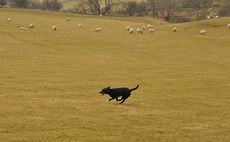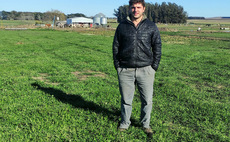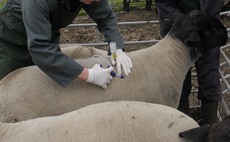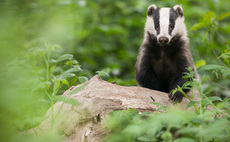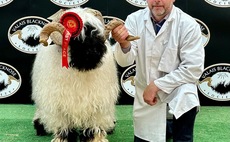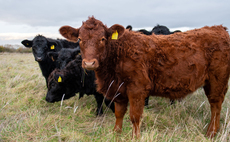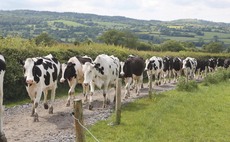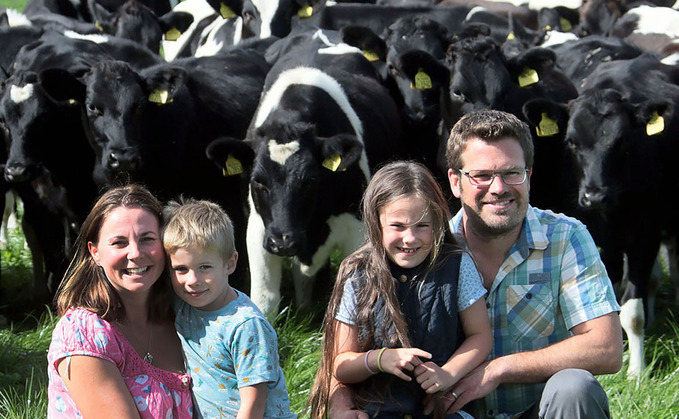
When opportunity knocks, West Wales dairy farmer Adam Jones rarely says ‘no' and this is a policy which has seen four-fold increases in farmed acreage and cow numbers over the past six years. Barry Alston reports.
While farm expansion for Adam Jones has meant a considerable financial investment, it has not been without its rewards, having also brought about major changes to herd management - including a switch in calving pattern, a reduction in cow size and a unique approach to calf rearing.
Coupled with controlling costs, regular grassland monitoring and a judicious use of fertilisers, Mr Jones' management approach earned him NFU Cymru's keenly contested 2018 dairy stockman of the year award. According to the judges, it was refreshing to see a young person showing such care and meticulous attention to ensuring the health and welfare of his animals, alongside quality milk production.
Mr Jones studied agriculture at the Harper Adams University before returning to Ceredigion to farm Pantgwyn, at Synod Inn, Llandysul, in what is now a family partnership with his wife, Kate, and parents Des and Joan.
But what originally was a 40-hectare (100-acre) holding farmed by his grandfather is now a 202ha (500-acre) business with 138ha (340-acre) being owned. From 110 milkers the herd now runs to 430 cows. The expansion has revolved around taking every opportunity to rent or buy land on nearby holdings as and when it became available.
"When you are offered ground on neighbouring farms, in your heart you know that opportunity might never come around again. Turn it down and you could regret that decision for the rest of your life," says Mr Jones. "We decided to bite the bullet and draw up a business plan. Fortunately, it has been a policy which seems to be working."
Taking on the extra ground has not, however, been without having to make additional investment into improving the infrastructure, such as drainage and reseeding, as well as installing water supplies and a network of cow tracks.
"More than half the land we bought was out of production and it certainly is not cost-effective to buy extra acres which are not working for you. Farms need to be farmed or they regress," adds Mr Jones.
By far the biggest management change has been the switch from what was a system of calving over a 10-month period to spring block calving to maximise output from the farm's ability to grow high quality grass throughout the grazing season.
This was achieved by way of running a split system over a three-year spell, with half the herd calving in the spring and the other half in autumn. Breeding among the autumn calvers was slipped for two years to enable the conversion to spring calving over a 12-week block from February 14 onwards.
Mr Jones says: "Initially that spread suited us because we were expanding numbers and wanted to do so with our own stock, rather than buying in from unknown sources. We are now starting to tighten the block."
Cows are predominantly British Friesian, along with some Jersey crosses and Swedish Reds, with turnout to grass at calving until the end of November. "We were running an 8,500-litre cow but that was a big animal for our system so we dropped yield back, reduced cow size and increased the stocking rate," adds Mr Jones.
Cows are now producing an average 6,500-litre yield from 1.2kg of concentrates, with about 4,000 litres coming from forage based on a stocking rate of 4.6 livestock units per ha on the grazing platform.
"The aim is for an average mature cow weight of 520kg, though some are more than 700kg and others only 400kg - quite a large range but we are now putting the larger animals to a Jersey or Jersey cross," says Mr Jones. "Cow type has consistently been to breed for high milk quality, with the butterfat level standing at 4.4 per cent and protein at 3.7 per cent, with the aim being to match milk solids to cow size, kilo to kilo, with a 530kg producing 530kg of solids."
While meticulous attention to detail is a key element as far as the cows are concerned, just as much care is taken with youngstock. Every newborn calf is bottle fed colostrum, a practice which has transformed the farm's approach to youngstock health.
Making the first feed can take up to 30 minutes and at the peak calving period there could be about 17 calves born in a 24-hour period, but Mr Jones insists human perseverance is a good investment of time. "We introduced the policy in a bid to raise calf immunity against infection from cryptosporidium.
"I was advised that once you have crypto on the farm, getting rid of it can be difficult, but you can give calves a better chance of avoiding it by the way you manage your approach to colostrum. In essence, this means sticking to the three Qs - quality, quantity and quickly. It is essential calves get that first feed within two hours of birth, with the volume varying between calves at between two and four litres. Feeding times can vary from five minutes up to half an hour.
"I do the night shifts while Kate and our herdsman are responsible for the daytime feeding," adds Mr Jones.
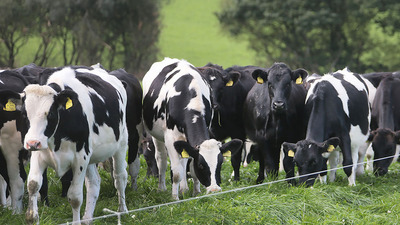
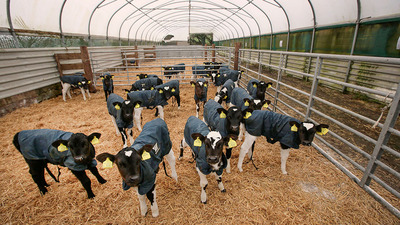

Colostrum is stored in an industrial-size fridge and warmed in a water bath fitted with a heating element.
Milk from the second milking is also stored in the fridge and bottle fed, while follow-on milk from cows in the colostrum group is stored in an old milk tank and fed to calves for the next four days before moving on to a milk replacer fed twice a day.
Attention to detail goes further in that information, including time of birth, the amount of milk consumed in each of the first five feeds and the time of feeding, is recorded on blackboards. Another change in youngstock rearing has been to house calves in a polytunnel until weaning at eight to 10 weeks when they are eating 2kg of concentrates.
"We adopted this approach when we made the switch to spring block calving. Half the herd calves in the first two weeks and with so many calves being born in such a short period I was concerned about disease issues in the calf pens," says Mr Jones.
"Additional capacity was also needed as cow numbers increased and the 30 feet by 120 feet open ended tunnel can accommodate up to 100 calves. It can be accessed by a tractor with a straw chopper for bedding or a trailer for feeding milk replacer. The conditions are nice and airy and the calves do well in there."
Calves destined for herd replacements are weighed at weaning, turned out to grass and weighed every month until calving. The target bulling weight is 330kg with an eye being kept on the target mature cow weight of 520-550kg.
Mr Jones says: "It is not a case of watching growth curves but monitoring for an average daily liveweight gain of 0.7kg to meet the targets. They share the grazing platform with the cows, with two fields being set aside for their use and not grazed hard so as to not kill their growth rates.
"We supplementary feed with 1kg per head of cake until the end of July. That gets them past the point where they can manage without concentrates. There can be no doubt that by observing our protocols to the letter throughout the entire rearing period, our calves are most definitely healthier and fitter when they join the milking herd."
The couple have two young children, seven-year-old Mabli and Rhodri, who is five. As well as being involved on-farm, Kate has developed a talent as a specialist coloured pencil artist having produced some much admired finely detailed animal drawings.
Previous human resources experience with the Welsh Government has also come in handy when dealing with on-farm staffing issues, not least ensuring everyone feels valued.
To that end, Friday mornings see her cooking breakfast for the team and a round-the-table catch up.
While there are currently no plans for further expansion, this is something Mr Jones does not rule out should the opportunity arise.
"Over the past six years or so we have been continually expanding and improving," he says. "Maybe the time has come to consolidate, but should we be offered more land, would I really be able to say no?"
Farm facts
- Milking is twice a day through a 24:48 Dairymaster parlour installed as a 16:32 some 10 years ago and extended two years ago with an additional eight units
- Features such as auto identification to operate gates, automatic footbaths and automatic cluster removal mean the parlour can be a one person operation
- All bottles and teats used over a calf's first two feeds are disinfected between calves to ensure good levels of hygiene






